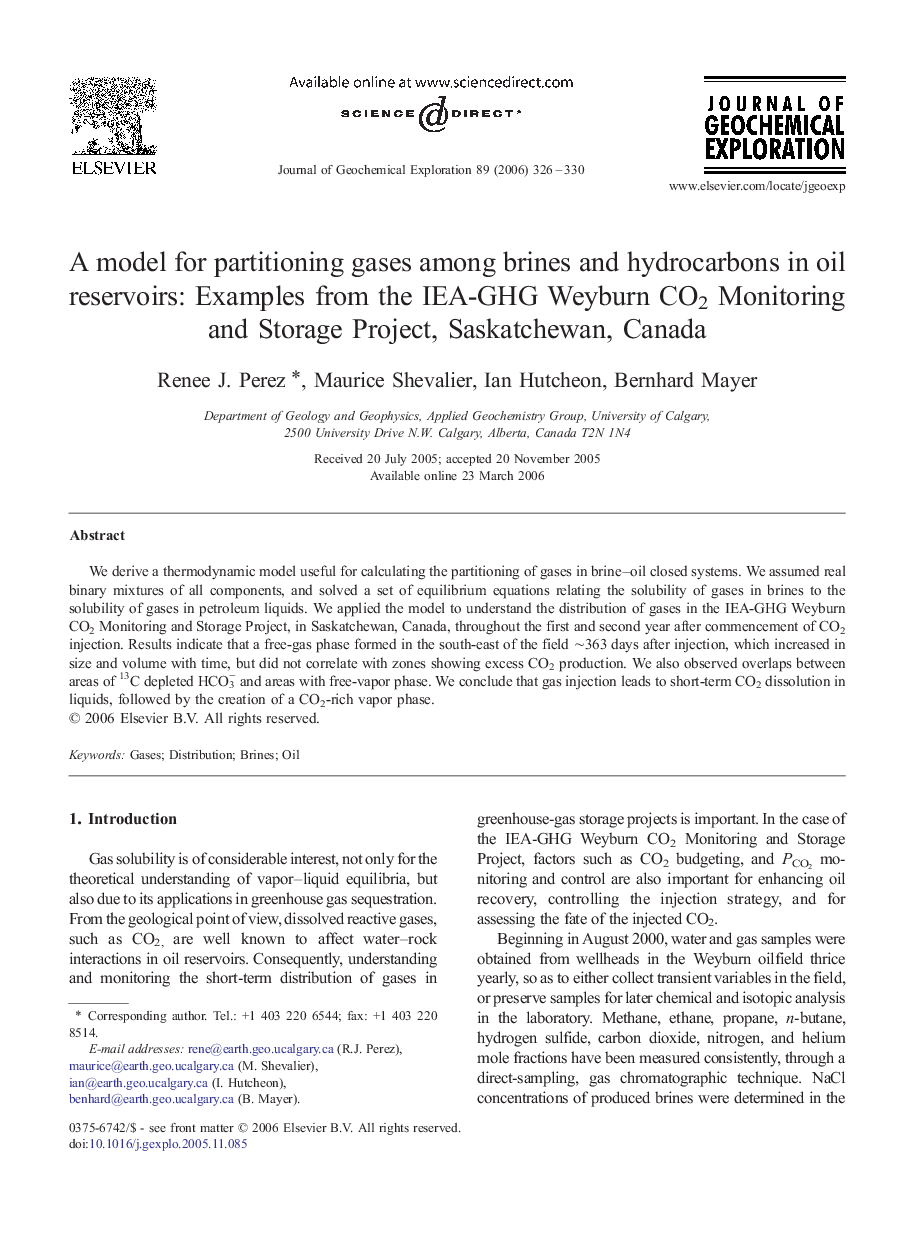| Article ID | Journal | Published Year | Pages | File Type |
|---|---|---|---|---|
| 4458481 | Journal of Geochemical Exploration | 2006 | 5 Pages |
We derive a thermodynamic model useful for calculating the partitioning of gases in brine–oil closed systems. We assumed real binary mixtures of all components, and solved a set of equilibrium equations relating the solubility of gases in brines to the solubility of gases in petroleum liquids. We applied the model to understand the distribution of gases in the IEA-GHG Weyburn CO2 Monitoring and Storage Project, in Saskatchewan, Canada, throughout the first and second year after commencement of CO2 injection. Results indicate that a free-gas phase formed in the south-east of the field ∼363 days after injection, which increased in size and volume with time, but did not correlate with zones showing excess CO2 production. We also observed overlaps between areas of 13C depleted HCO3− and areas with free-vapor phase. We conclude that gas injection leads to short-term CO2 dissolution in liquids, followed by the creation of a CO2-rich vapor phase.
